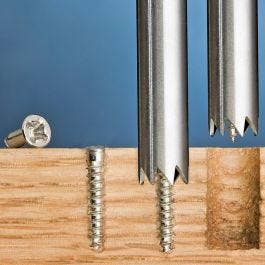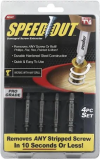That can be a bitch. The normal way is you drill a tiny hole in the center of the screw, stick a screw extractor in there (it's reverse threaded) and then use that to spin them out. Sounds easy, isn't.
Having recently gone through upgrading my trim tabs from 12x9 to 18x12, I'd look hard at an upgrade. Grady tends to put tabs on that are too small. If you could upgrade, there is a very high chance the new screw holes won't match up, you can drill them out as best as you can, cover them in 5200 (or epoxy, some people say that is better), mark the new holes, drill them, smear a bunch of 4200 on the hinge and screw that into place.



